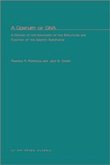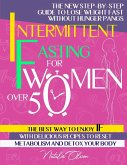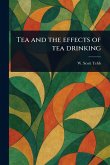Postmenopausal women (PMW) exhibit reduced endothelial function compared to younger, premenopausal women (YW). This is mainly attributed to the loss of estrogen with menopause but the mechanisms underlying the decline in endothelial function remain unclear. Angiotensin-(1-7) [Ang-(1-7)] induces vasodilation through the Mas receptor (MasR) and has been shown to restore endothelium-dependent dilation in women with endothelial dysfunction. Animal studies suggest menopause and aging reduce vascular sensitivity to Ang-(1-7) which may cause a compensatory upregulation of MasR. However, the role of the Ang-(1-7)/ MasR axis has not yet been studied in humans. The central hypothesis of this was that the Ang-(1-7)/MasR axis is a main regulator of vascular function in women and that there is dysfunction in this pathway that occurs during menopause which leads to the pathologies associated with the onset of CVD. We hypothesize that PMW would have decreased vascular sensitivity to Ang-(1-7), local administration of Ang-(1-7) would improve endothelial function, and PMW would show a compensatory-based upregulation of MasR on endothelial cells. Methods: Blood flow was measured using laser Doppler flowmetry. To assess vascular sensitivity, Ang-(1-7) was locally administered in escalating doses in the presence and absence of L-NAME via cutaneous microdialysis to elicit a dose-dependent response. Dose response curves were fit to a sigmoidal curve and the ED50, slope, area under the curve, and peak response were compared between groups. To assess endothelial function, local heating of the cutaneous circulation to 42C - which elicits an endothelium-dependent dilation - was performed during microdialysis perfusions of lactated Ringers (control) or Ang-(1-7). All skin blood flow data are expressed as cutaneous vascular conductance as a percentage of the maximum dilation elicited by sodium nitroprusside perfusions with heating to 43����C (CVC%max). Separately, venous endothelial cells were collected from PMW and YW and stained for MasR using immunocytochemistry and are expressed as protein expression arbitrary units (A.U.) following normalization to a positive control. All data are presented as mean+SD and alpha was set to P older than YW and showed elevated diastolic blood pressure, total cholesterol, LDL cholesterol, HDL cholesterol, and blood glucose that is characteristic with aging and menopause in this population. There were no differences in the dose-dependent response to Ang-(1-7) (Top: (YW: 99.93+17.32 vs. PMW: 97.58+31.32), LogED50 (YW: 9.34+10.5 vs PMW: 8.40+3.96), HillSlope (YW: 0.18+0.24 vs PMW: 0.25+0.21), or area under the curve (YW: 73.76+19.83, vs PMW: 67.35+12.01); >0.05 for all variables). There was also no significant difference in NO-dependent dilation to Ang-(1-7) between YW and PMW (YW: 7.56+26.36 AUC vs. PMW: 17.40+25.75 AUC; p=0.48). PMW displayed a blunted endothelial function shown by a significantly attenuated response to local heating in the control site (YW: 91.26+4.87 CVC%max vs. PMW: 85.97+5.63 CVC%max; p=0.03), however, there was no impact of Ang-(1-7) on the response to local heating in either group (YW: 89.23+10.35 CVC%max vs. PMW 87.19+9.57 CVC%max; p=0.88). Lastly, there were no differences in endothelial MasR expression between groups (YW: 0.36+0.08 A.U
Bitte wählen Sie Ihr Anliegen aus.
Rechnungen
Retourenschein anfordern
Bestellstatus
Storno









